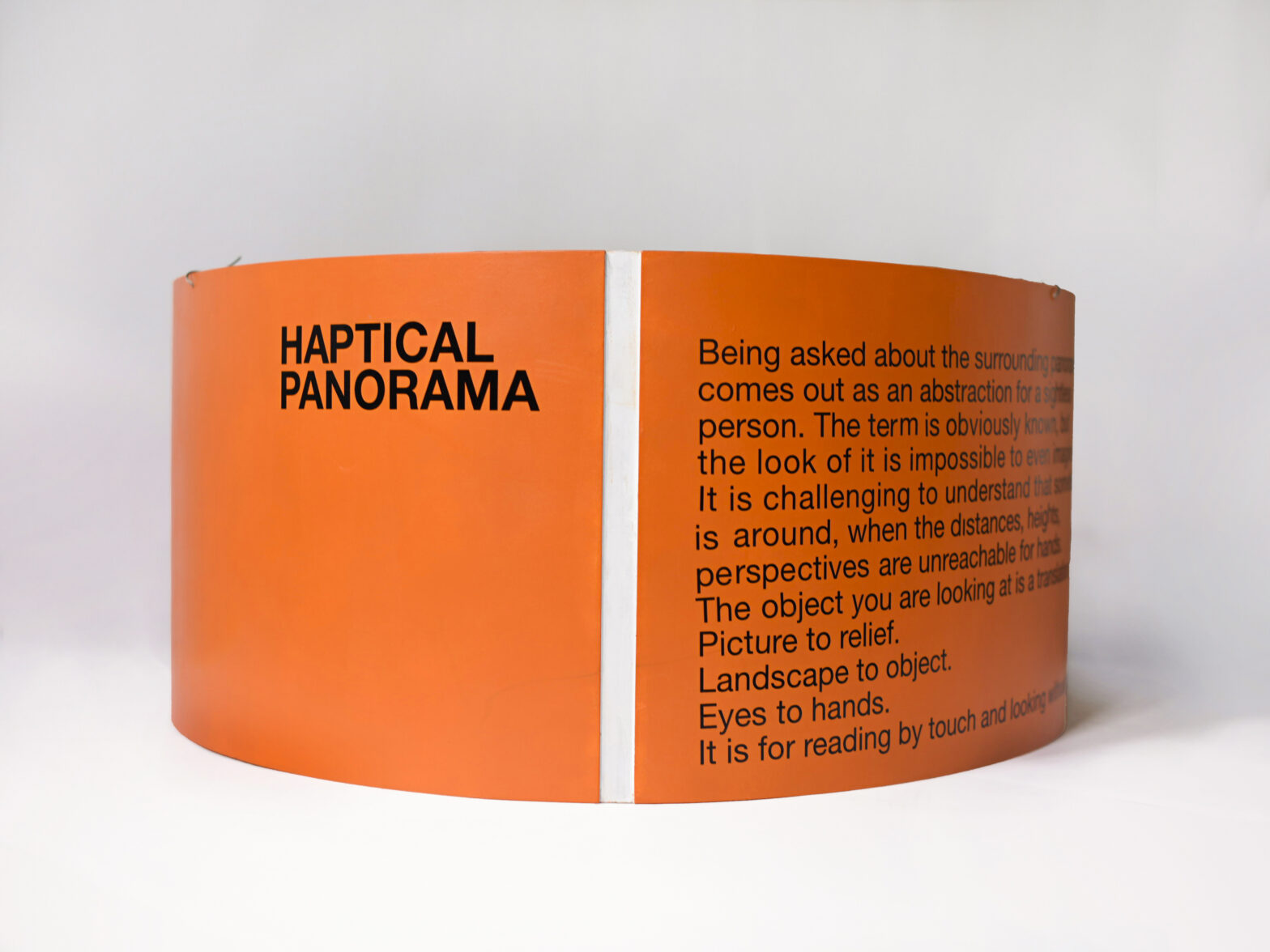2019
- UX Reaserch
- Accessibility Research & Consultation
- Interactive Installation Design
- Prototype Development
-
- Haptical Panorama explores how people with visual impairments perceive space and challenges the fundamental assumption that “panorama” is a universal concept. Through collaborative research with blind communities in Berlin and Warsaw, this project reveals that the idea of being “surrounded” by a landscape is completely abstract without sight.
- The result is an innovative tactile installation that translates 360-degree visual experiences into three-dimensional relief, allowing blind users to experience panoramic perception through touch for the first time. This research-driven design bridges different ways of understanding space and demonstrates how inclusive design can make the impossible accessible.
Johann-August-Zeune-Schule für Blinde
Documentation
What comes with looking without sight?
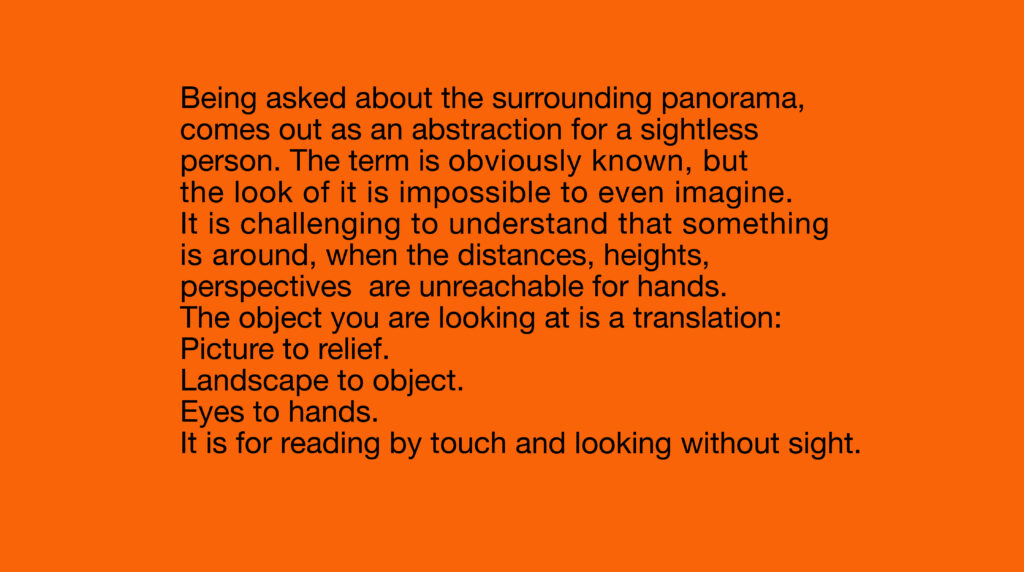
The project began with a focus on exploring the concept of panorama. Initially, I wanted to show sighted audiences how blind people perceive panoramic space. However, through research with blind communities, I discovered that blind people experience space fundamentally differently – they perceive the world sequentially, object by object, touch by touch, and the concept of panorama or being “surrounded” by a landscape is completely abstract to them.
How do you explain three-dimensional space and the concept of being “surrounded” to someone who has never experienced panoramic vision?
This research insight led to a complete shift in approach. Instead of showing their perspective to us, I decided to show them what it means to be surrounded by a landscape – to make the concept of panorama accessible and understandable for the first time.
Haptical Panorama is the result of this research-driven pivot: a tactile installation that translates the visual concept of panoramic space into a physical, explorable experience through touch.
This project bridged the gap between visual and tactile perception, making the abstract concept of panorama accessible for the first time while raising awareness about how Blind people function and perceive the world, ultimately translating our visual perspective into their tactile experience.
Problem Statement
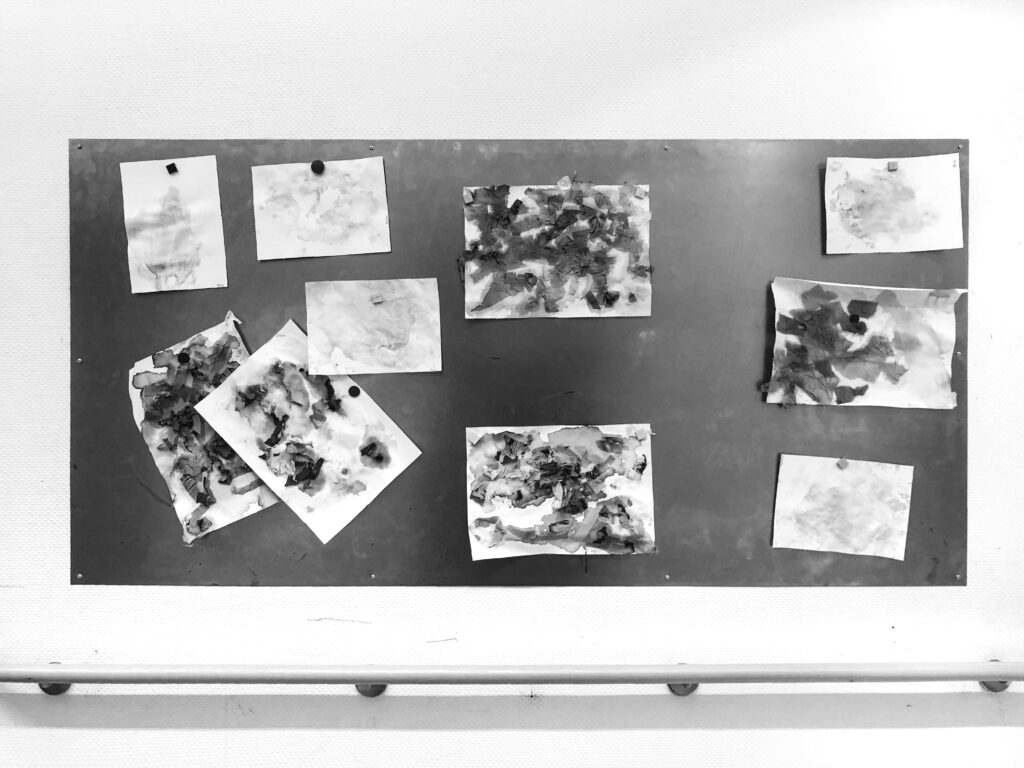
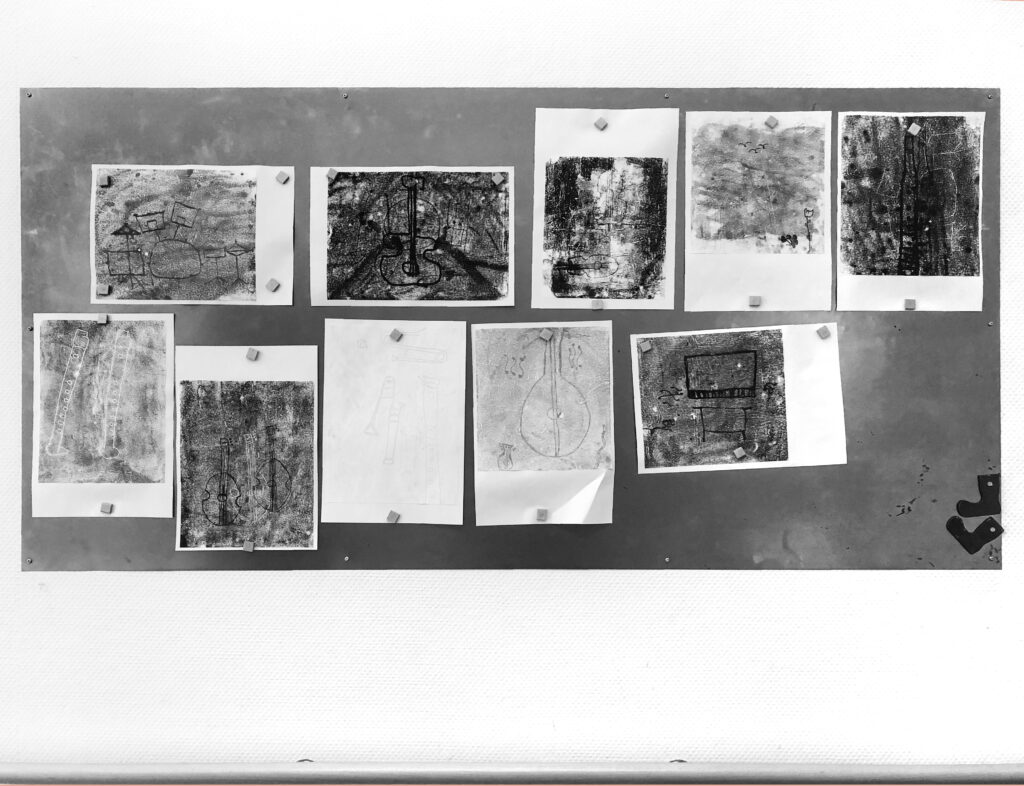
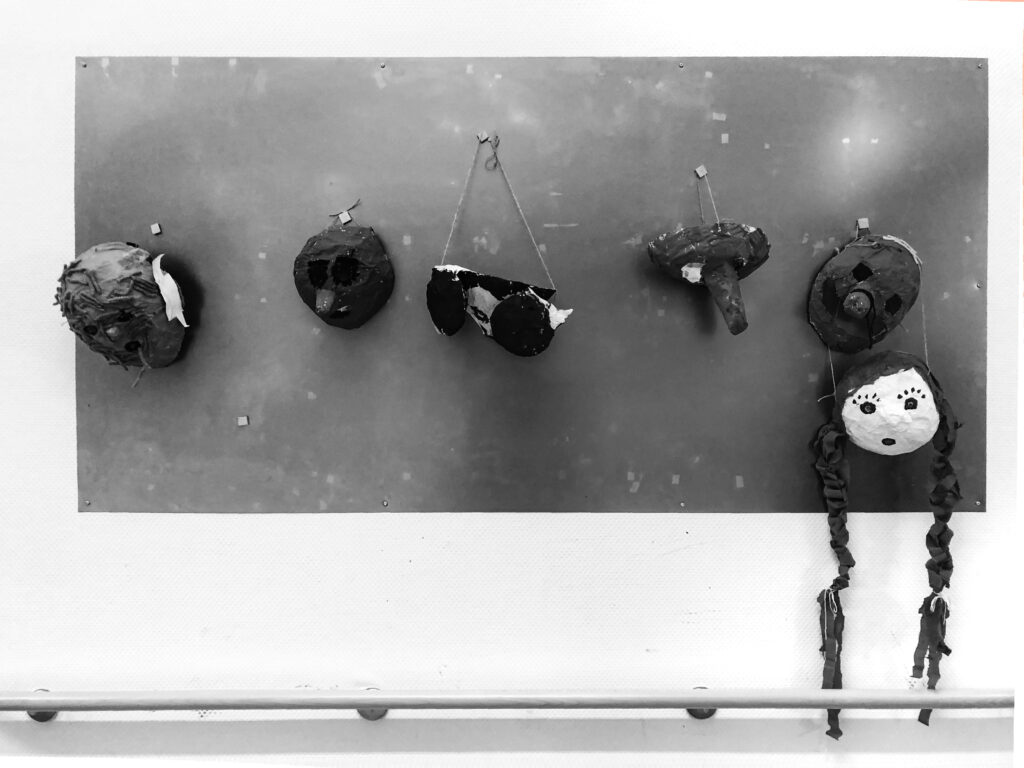
↑Works by students from Zeune School for the Blind
The Problem
- Through extensive research with organizations including the Zeune School for the Blind in Berlin, the Museum of Blindness, and the Polish National Blind Association, the core challenge became clear: how do you communicate the concept of three-dimensional space to someone who has never experienced it visually?
- They say f.e. City panorama, so i assume,
- that’s what it is. But it’s hard to imagine
- such thing, I have nothing specyfic in my
- head… – Ewa Sawicka, research participant
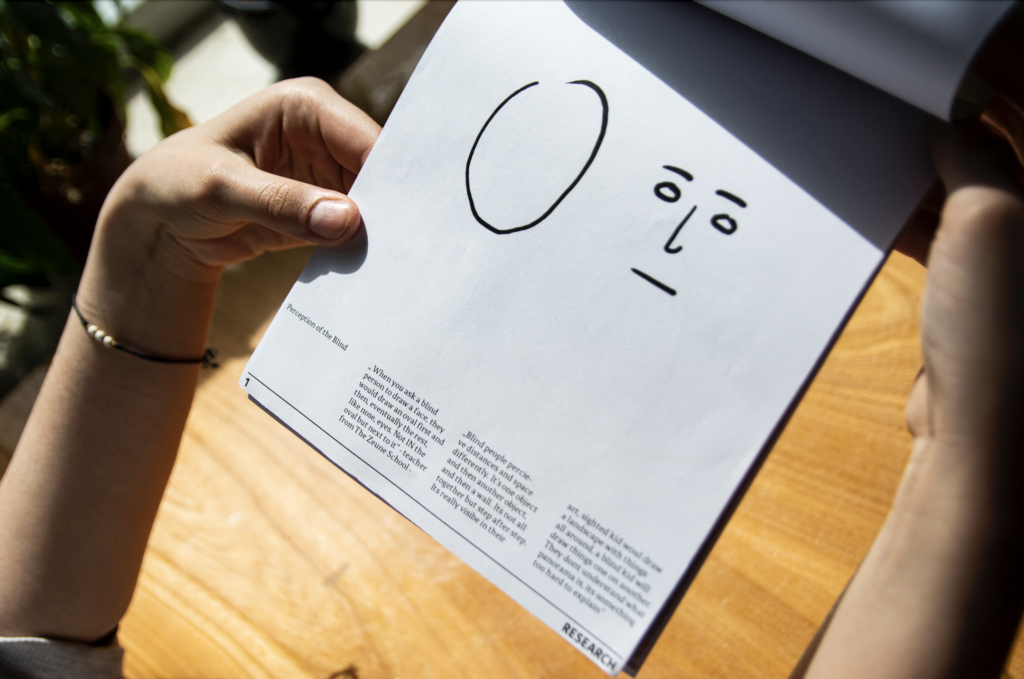
When asked to draw a landscape, sighted children naturally show depth and spatial relationships. Blind children, however, draw objects stacked on top of each other – not because they lack artistic ability, but because they perceive space sequentially: “one object, then another object, then a wall.”
Research & Discovery
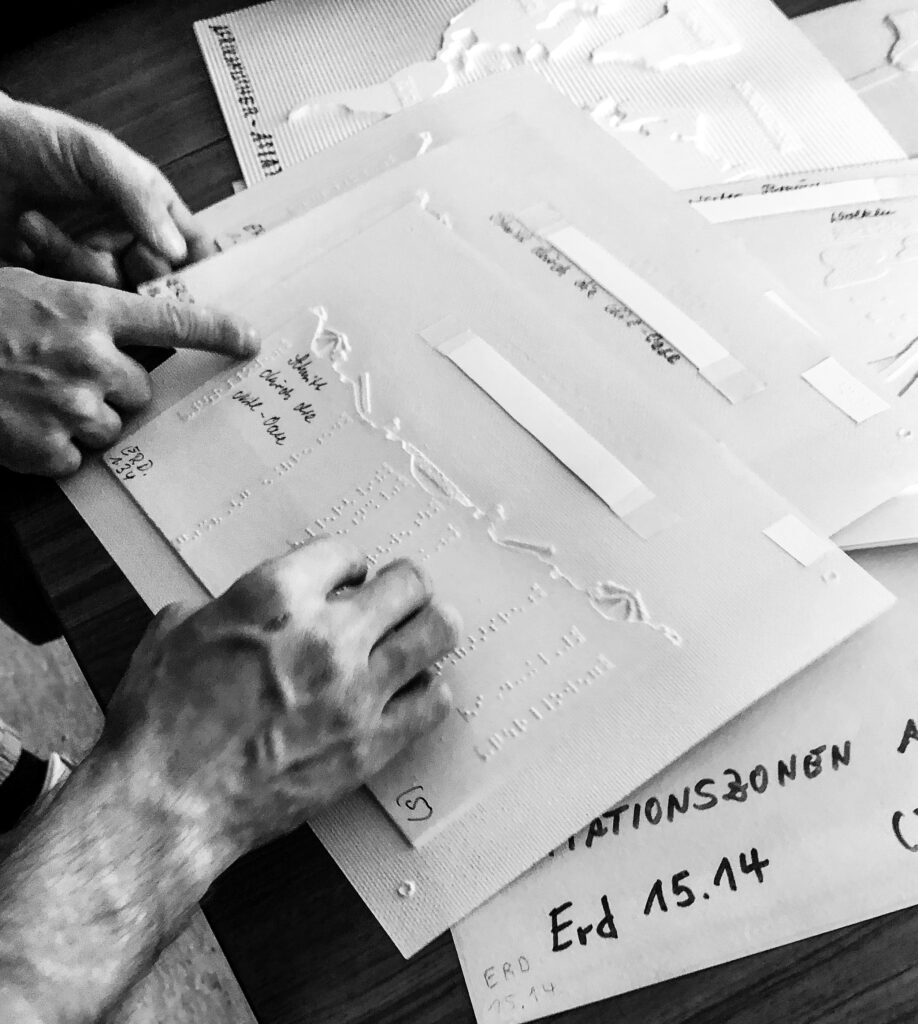
- Blind individuals perceive the world “object by object” rather than as unified spaces
- Traditional tactile educational materials are small and gently convex, limiting spatial understanding
- No existing solution adequately conveys the experience of being surrounded by an environment
- The concept of 360-degree perception is entirely foreign without visual reference
- Interviews with blind individuals and educators
- Facility visits to specialized schools and museums
- Analysis of existing tactile educational materials
- Collaboration with blind advocacy organizations
- Studies, books and video materials analysis
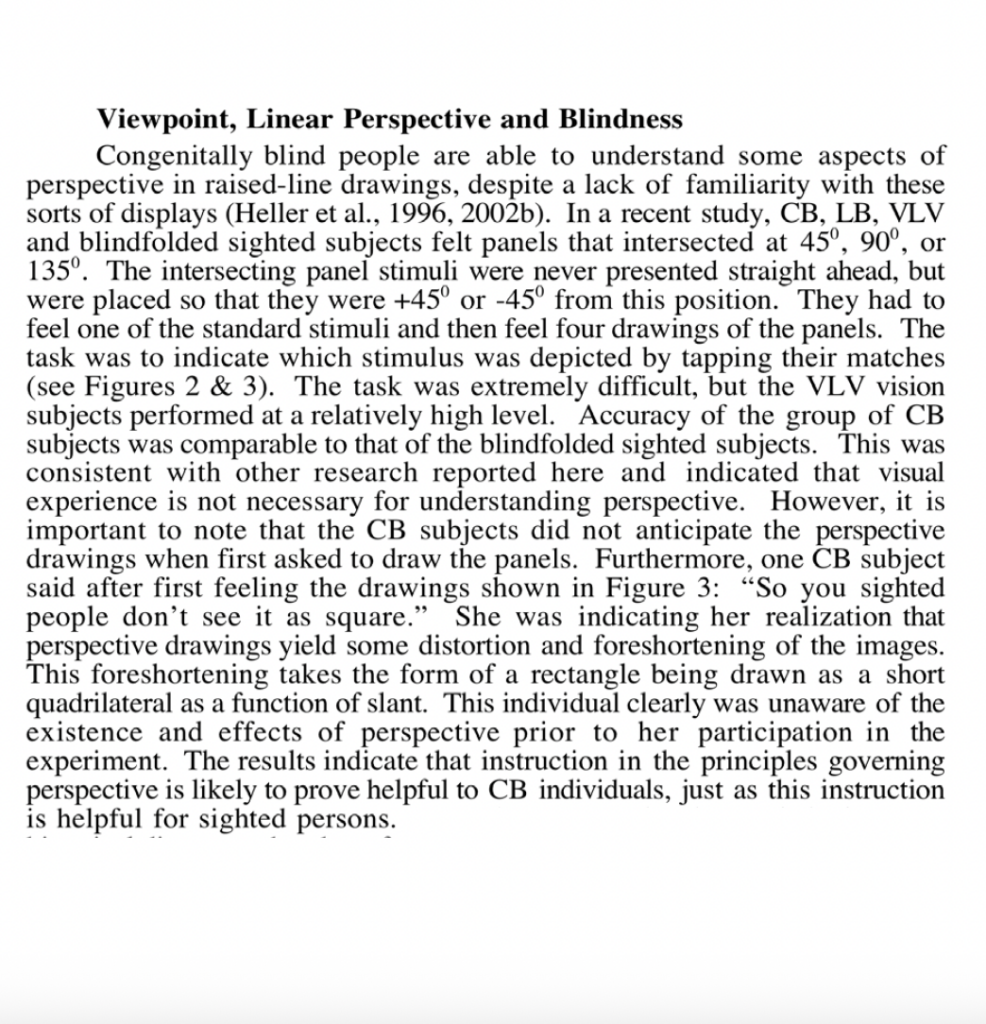
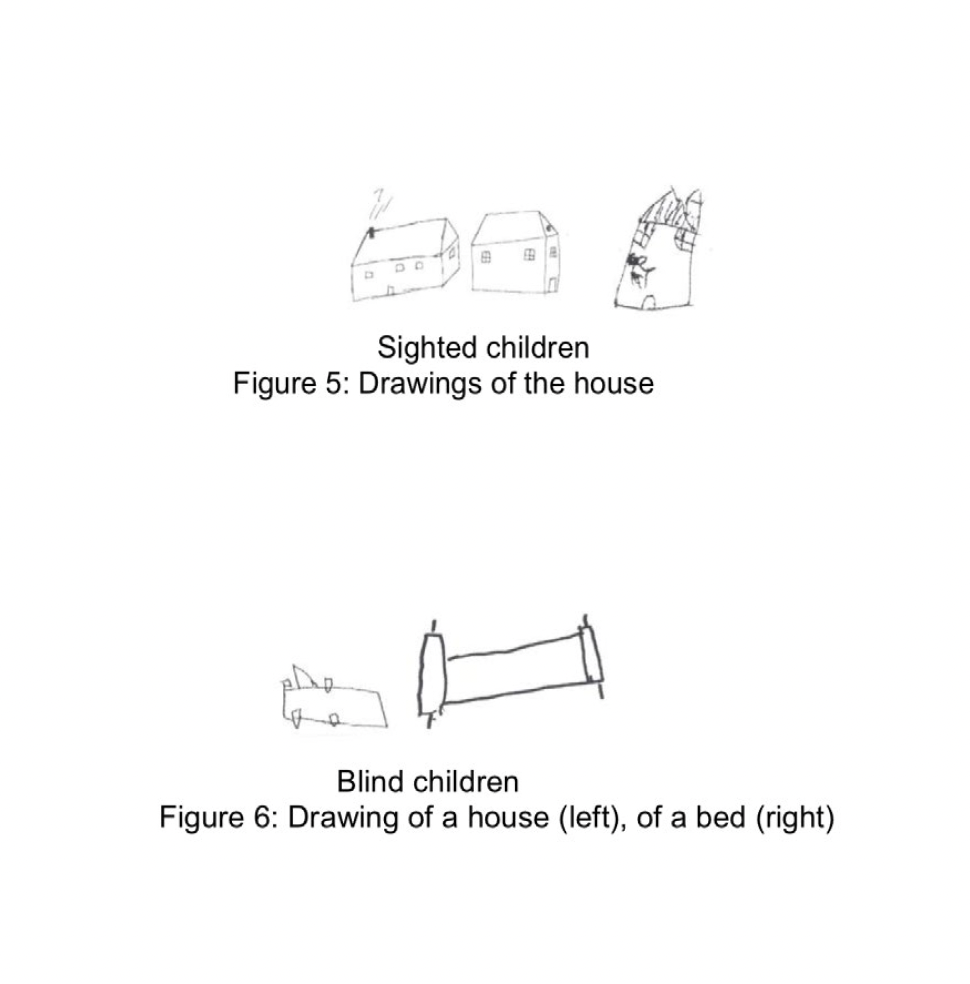
What is panorama?
I don’t know. – Zeune School student, research participant
….Hmm… – Blind Person, research participant
The Solution
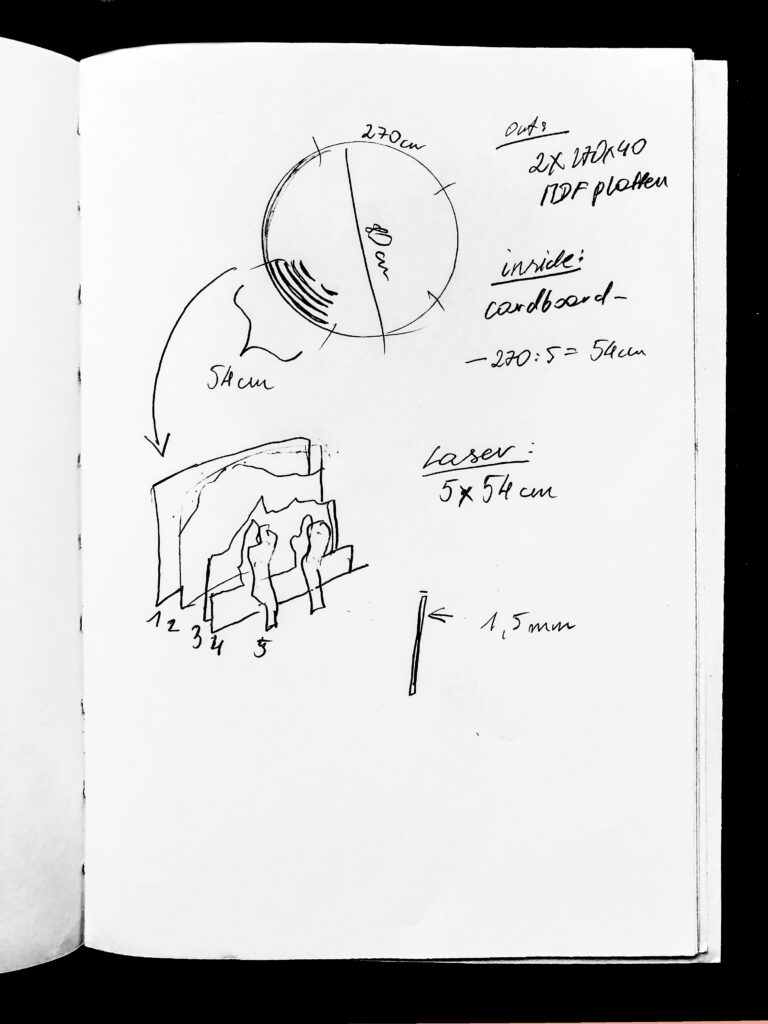
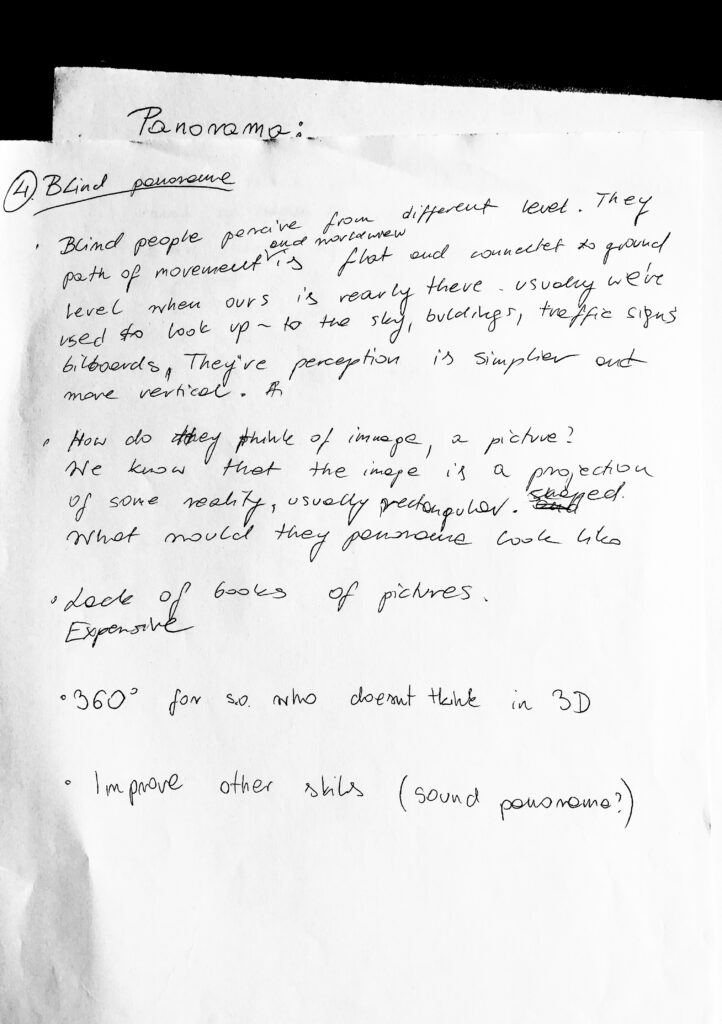
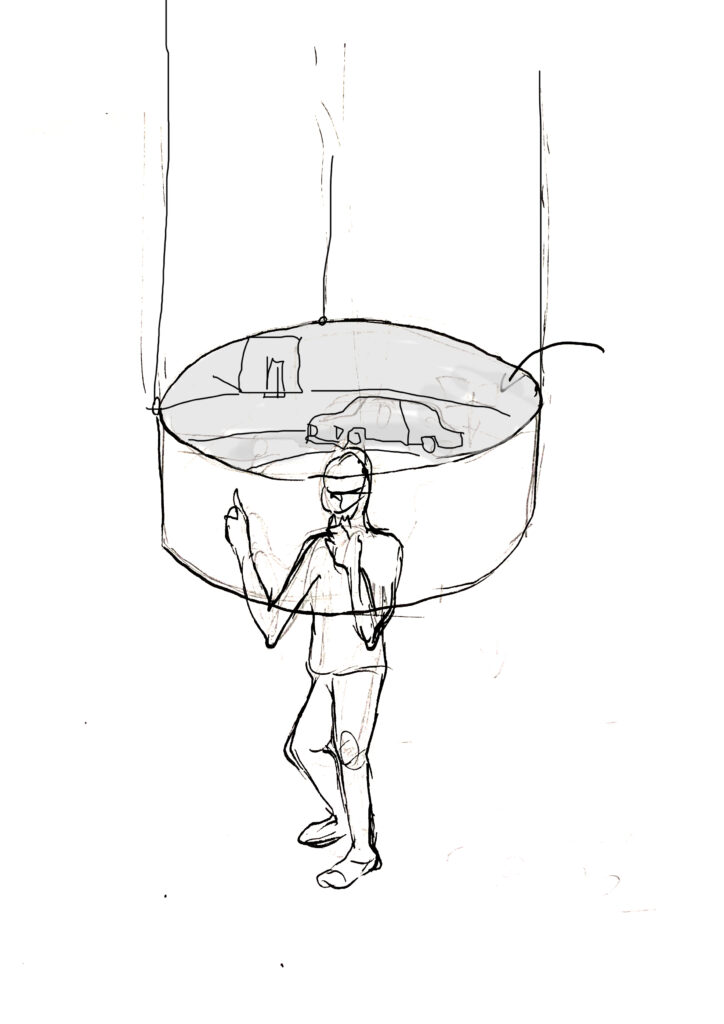
A large-scale cylindrical installation (85cm diameter) suspended at chest height, containing a layered tactile landscape on the interior surface. The immersive scale allows users to step inside and experience true spatial relationships for the first time. A white orientation strip on the exterior guides users around the perimeter, while the six-layer laser-cut cardboard construction creates genuine spatial depth. The three-point suspension system ensures stability during exploration, and universal design principles with clear edges and non-overlapping objects ensure maximum readability for all users.
- Picture → Relief
- Landscape → Object
- Eyes → Hands
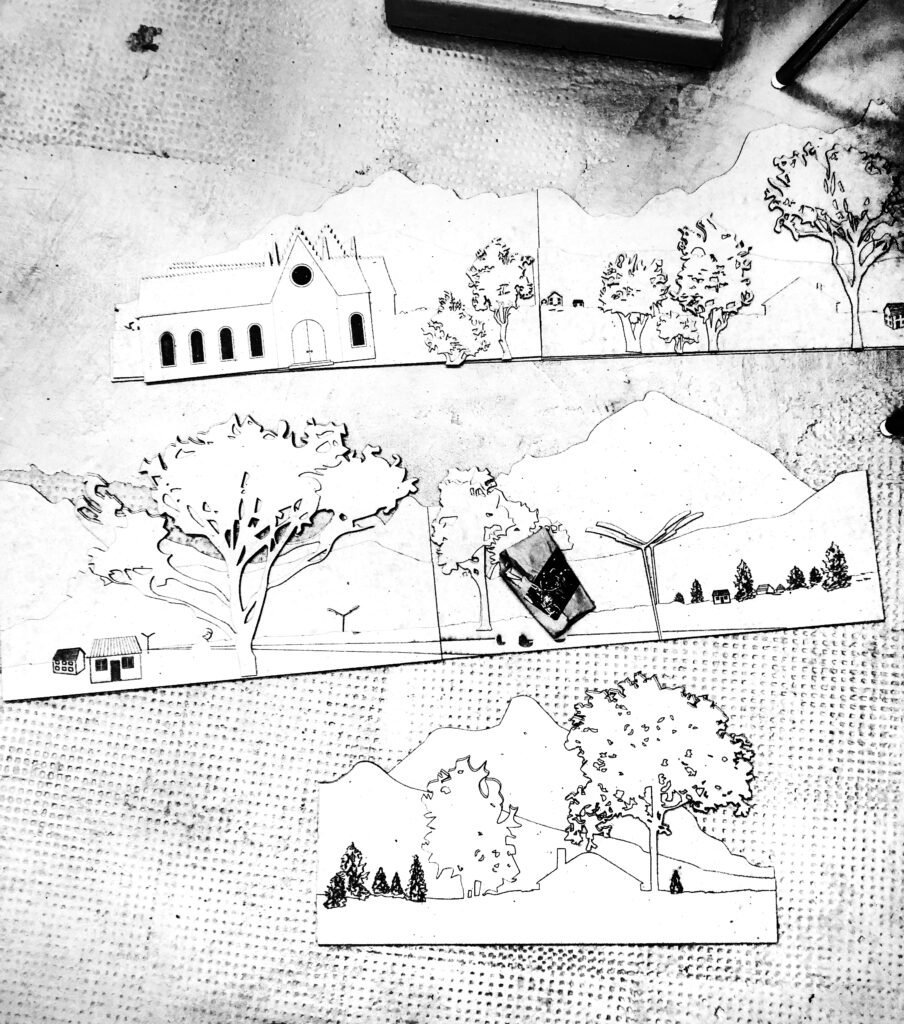
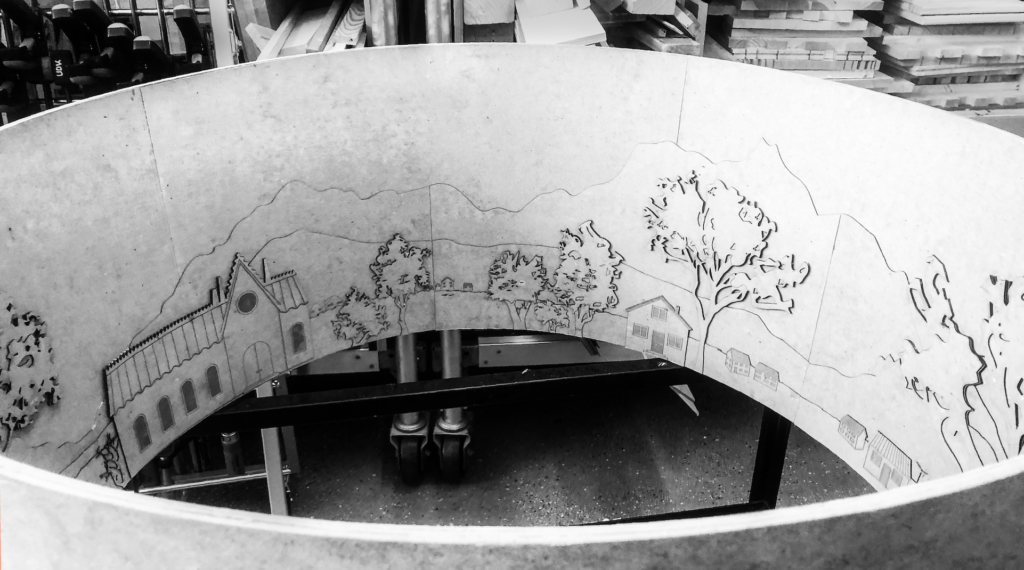
The installation features an MDF cylinder construction that balances durability with lightness for safe suspension. Extensive research was conducted on different materials and shapes to determine how they feel tactilely and how easily recognizable they are as distinct forms. The interior landscape consists of laser-cut cardboard layers inspired by traditional educational materials for the blind, chosen for optimal tactile recognition. Each layer required precise alignment to maintain spatial accuracy and create authentic depth perception. A professional three-point suspension system ensures safety and stability during user interaction.
- Entry point clearly marked with tactile reference strip
- Progressive exploration encourages natural discovery
- Intuitive navigation follows established patterns for blind users
- Objects designed with clear boundaries and recognizable forms
Result & Impact
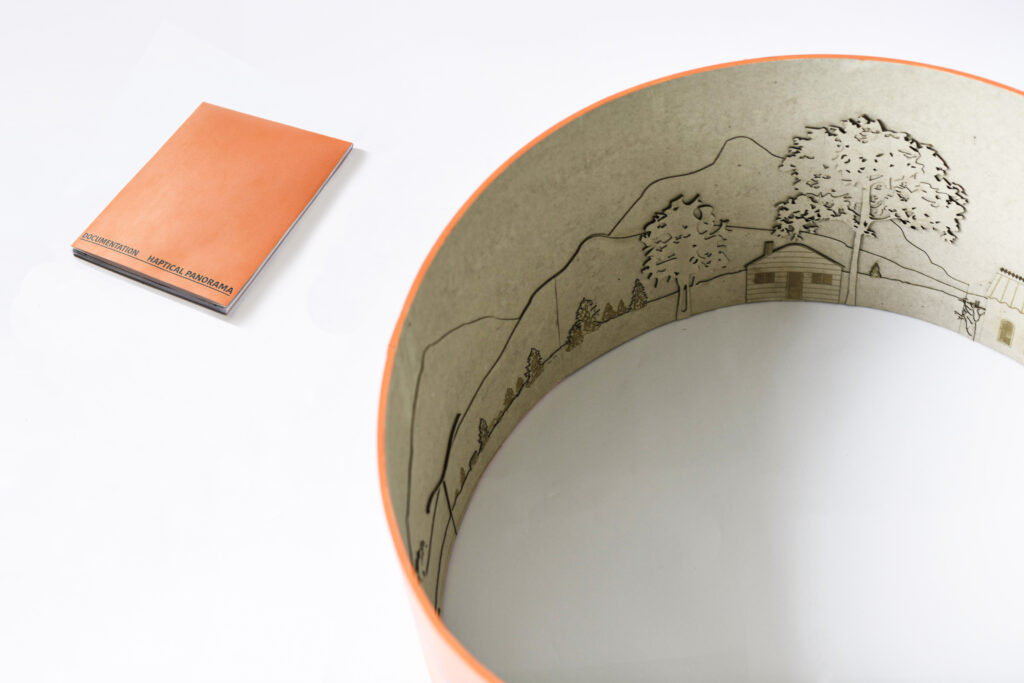
The completed Haptical Panorama installation successfully translates the visual concept of panoramic space into a tangible, explorable experience. Users can now physically understand what it means to be “surrounded” by a landscape for the first time, experiencing spatial relationships through touch that were previously impossible to comprehend.
- Collaborative development with blind community members ensured authentic user needs drove every design decision
- Invited participation from National Blind Society and Zeune School validated the solution’s effectiveness
- Ongoing feedback integration from visually impaired users confirmed the installation’s success in communicating panoramic concepts
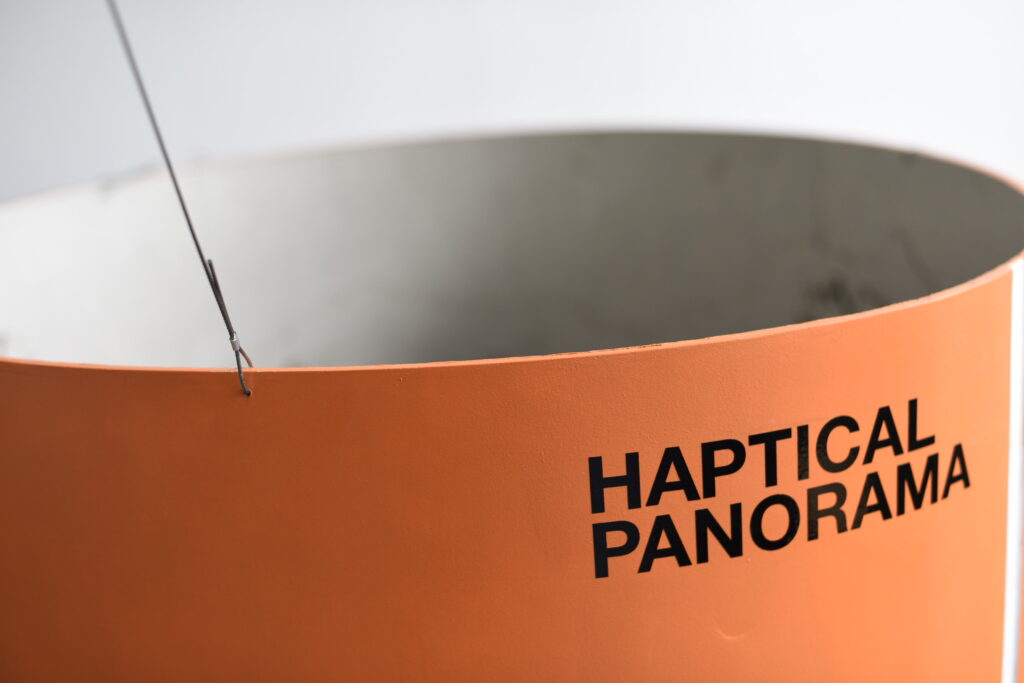
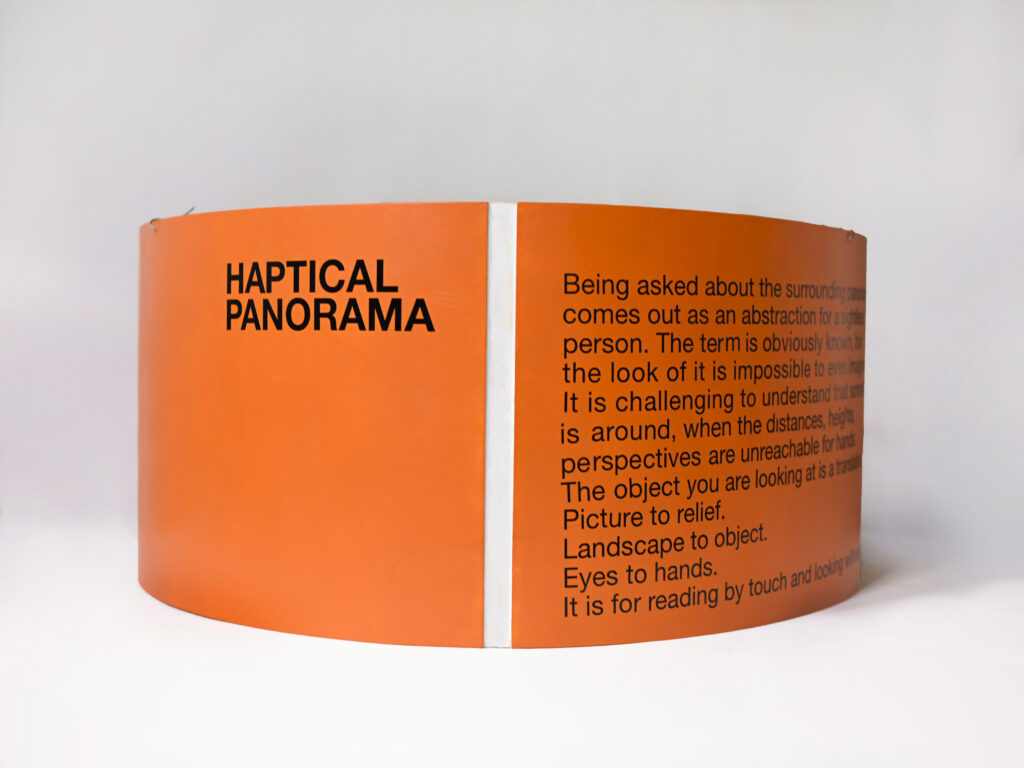
↓Poster and Photos from Rundgang exhibition
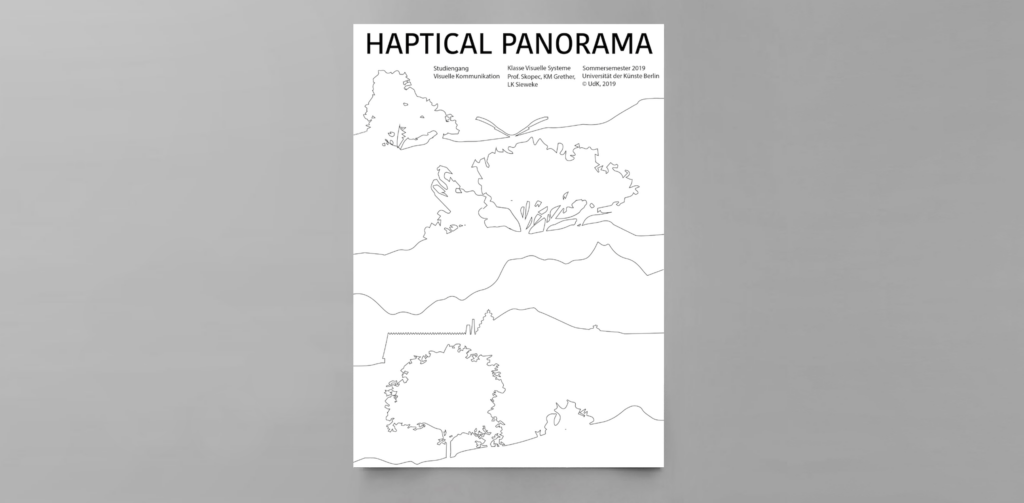
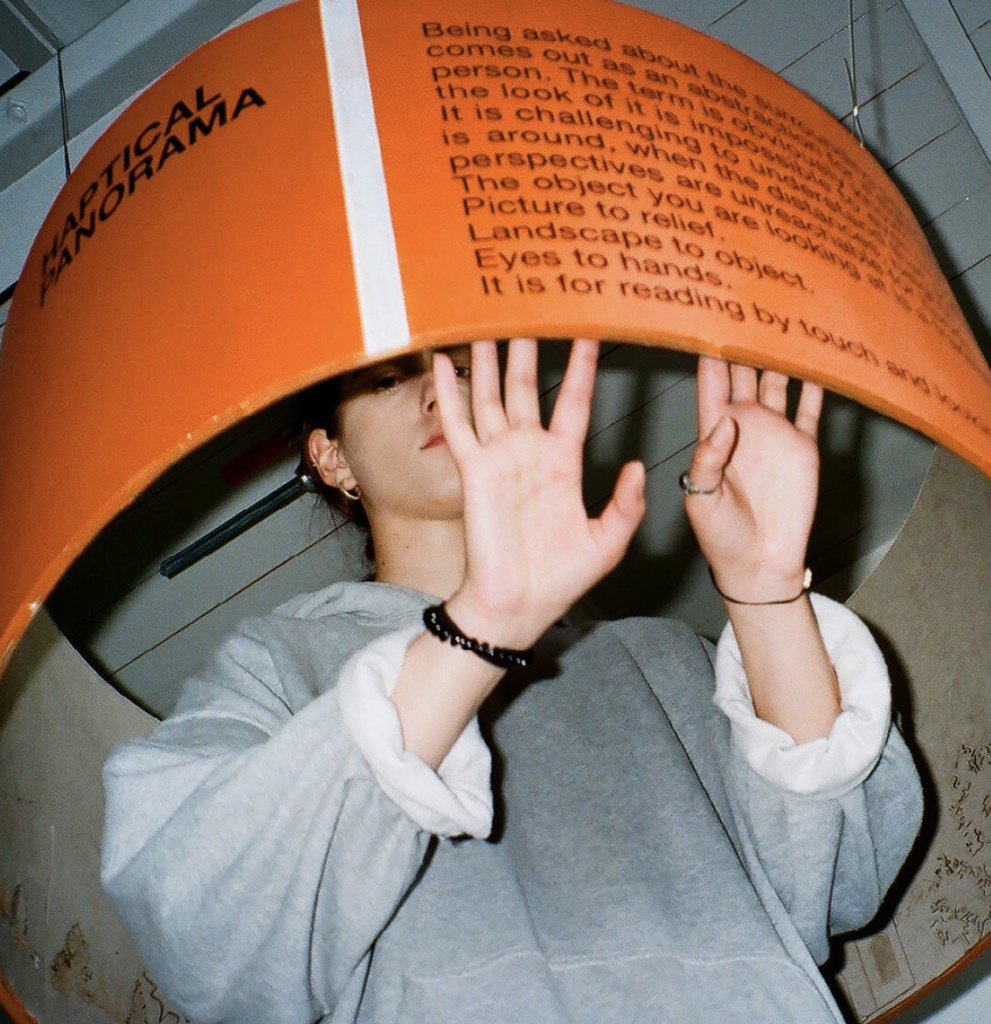
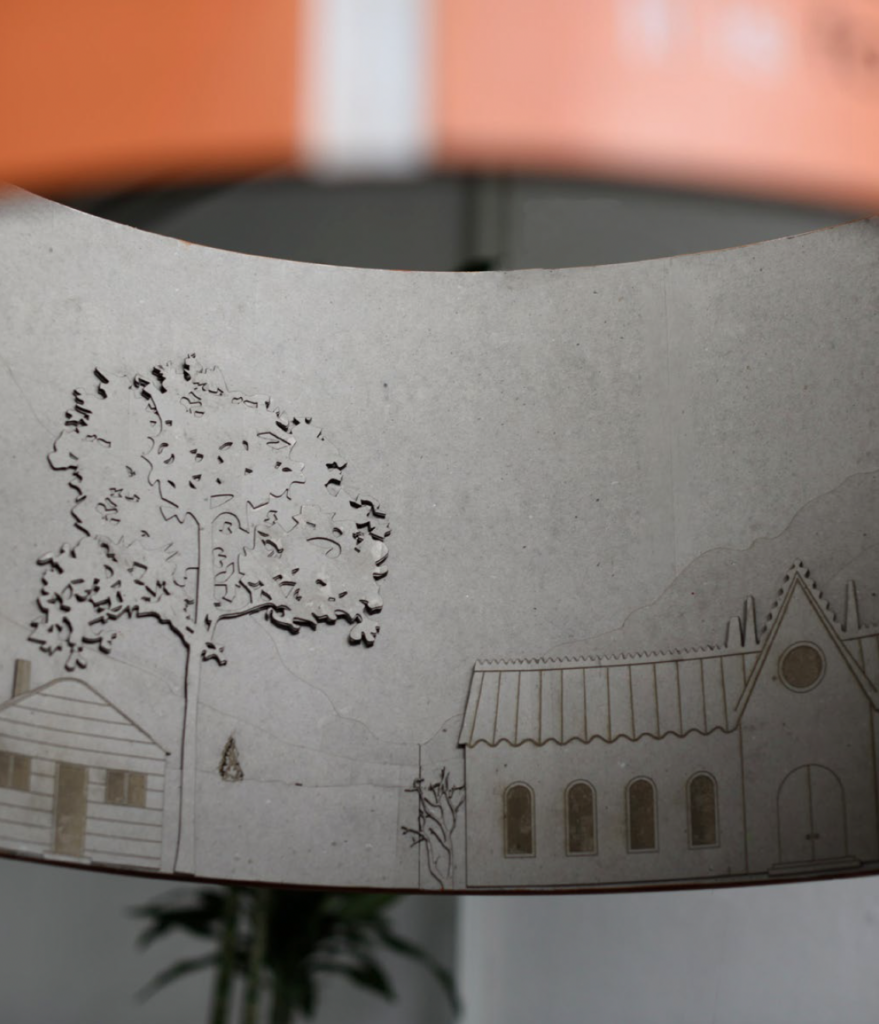
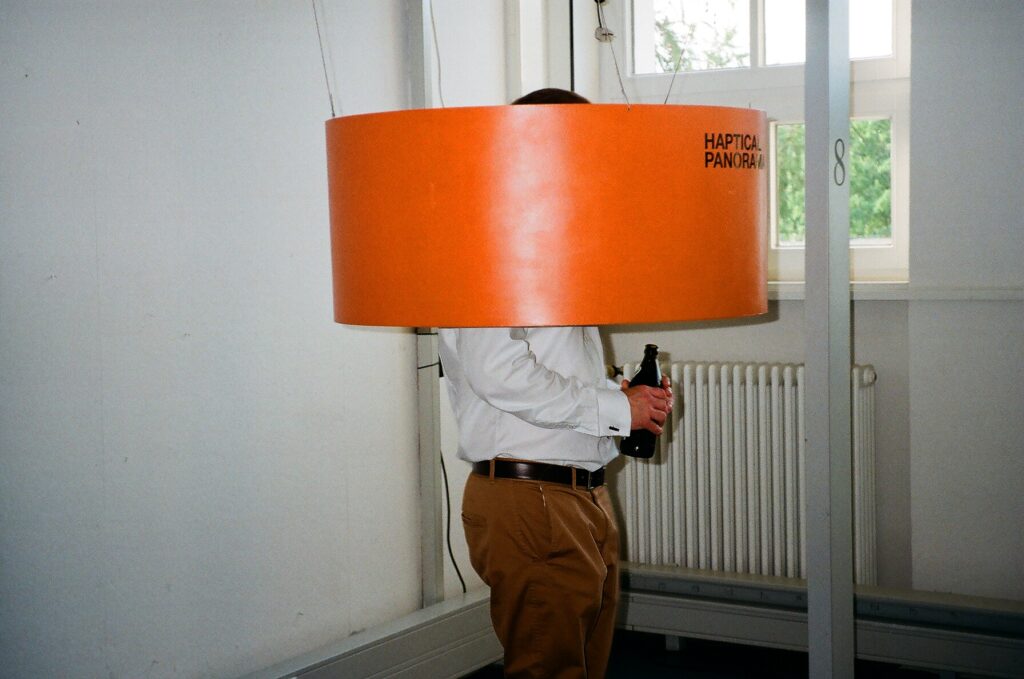
Reflection
Haptical Panorama represents more than assistive technology – it’s a bridge between different ways of experiencing the world. By creating the first tactile equivalent of panoramic vision, this project opens new possibilities for spatial education and inclusive design.
The project challenged fundamental assumptions about perception and demonstrated that innovative design can make previously impossible experiences accessible. Most importantly, it was created through genuine collaboration with the blind community, ensuring authentic user needs drove every design decision.
Project completed during Erasmus exchange at Universität der Künste Berlin, Visual Systems class under Professor David Skopec.
